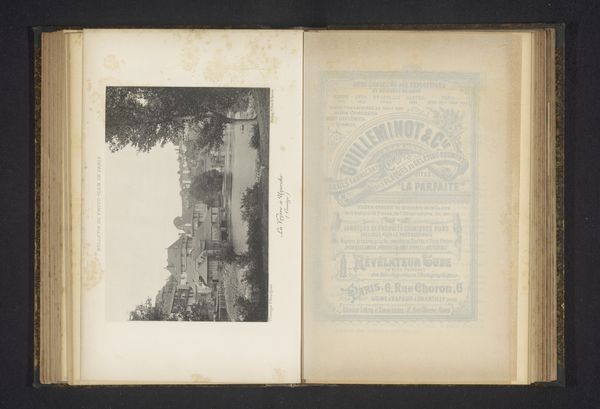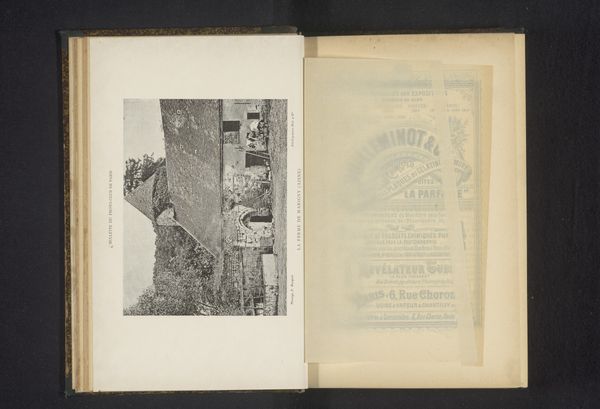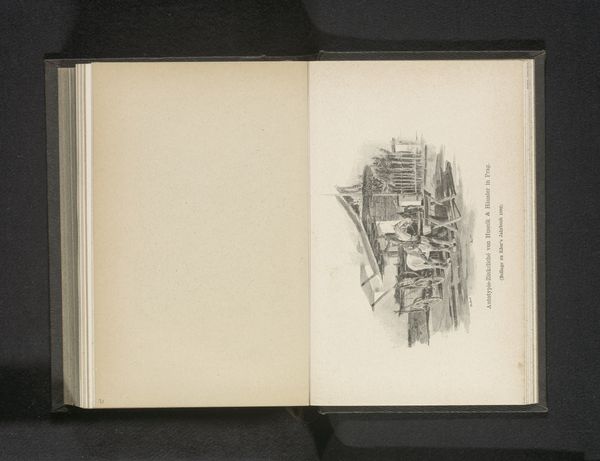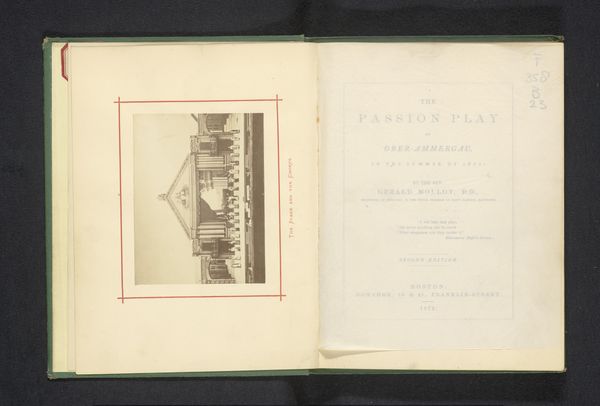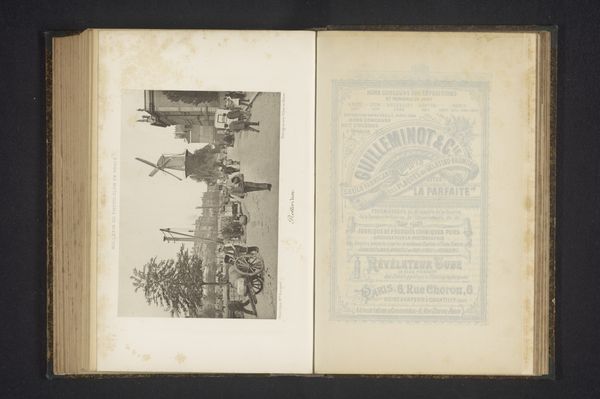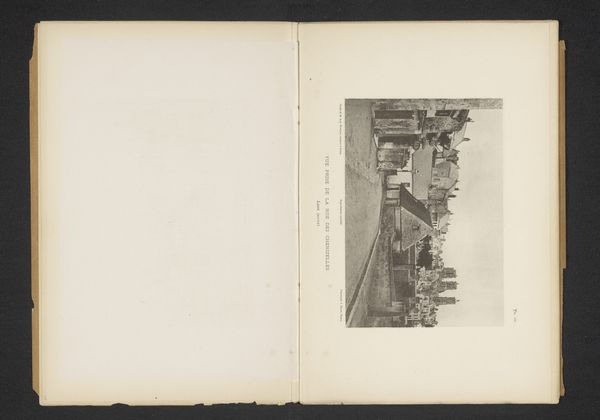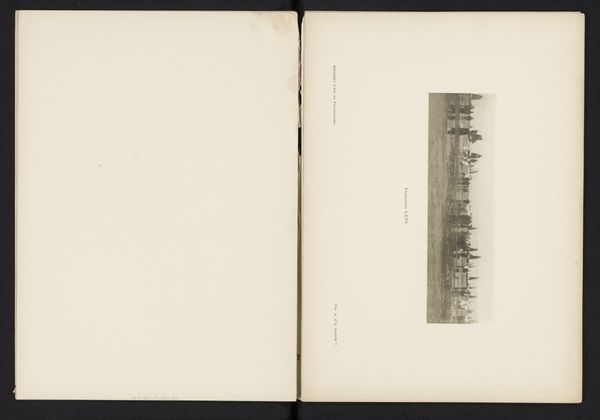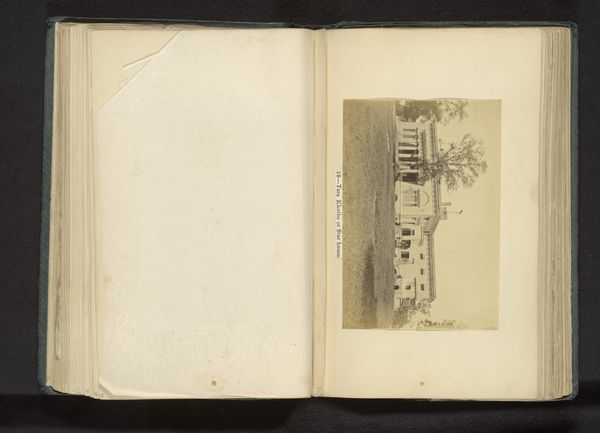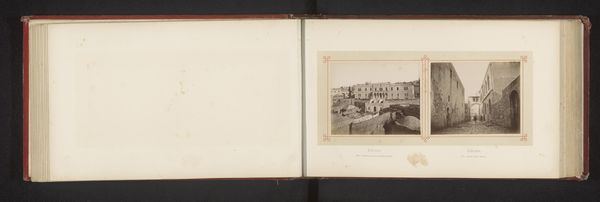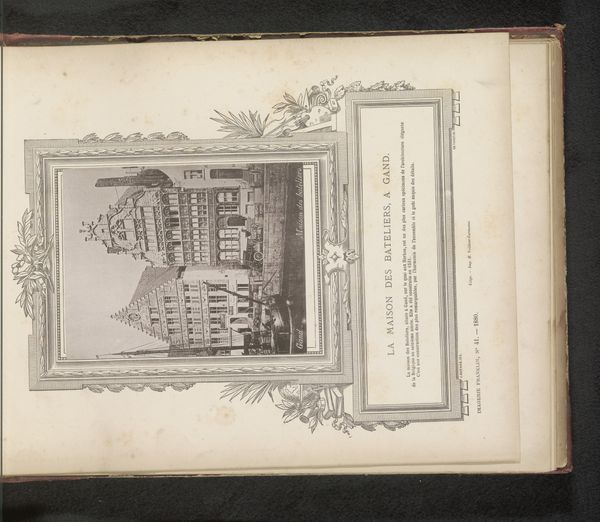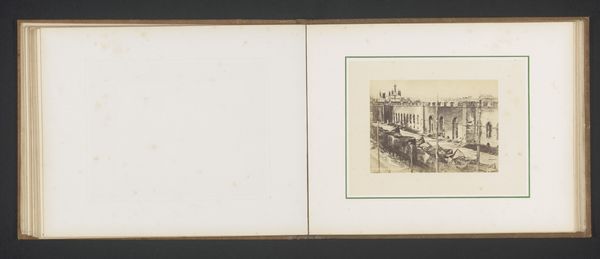
print, photography, albumen-print
# print
#
landscape
#
photography
#
ancient-mediterranean
#
cityscape
#
albumen-print
Dimensions: height 103 mm, width 163 mm
Copyright: Rijks Museum: Open Domain
Curator: This image captures the amphitheater of El Djem, a remarkable piece of Roman architecture in Tunisia, dating back to the 3rd century. The print, which comes from before 1895, is an albumen print photograph. Editor: My immediate impression is of imposing solidity. The photograph, though aged, conveys a stark, linear construction; repetitive arches march across the structure, contrasting with the organic chaos of the surrounding environment. Curator: It's fascinating how photography allowed the Marquis de la Ferronnays, the photographer, to disseminate these views of ancient power across geographical divides. This image and others in the album reflect Europe’s growing fascination with antiquity. The depiction, almost documentarian, highlights colonial era appreciation. Editor: True, yet observe the tonal gradation here – it’s masterful! The light renders the ruin almost weightless in parts, playing with volume through light and shadow, effectively undermining the heaviness one would expect. See how the perspective emphasizes horizontality—a kind of serene repose amidst the stones. Curator: Yes, but consider its significance to photographic discourse. Albums like these showcased photographic skills and were exhibited at photography clubs of Paris, influencing photographic standards and validating photography's status as high art. Editor: But the ruins are inherently loaded; what was their effect on people, from those involved in spectacles during its functioning days, to its colonial encounter when a European artist felt the urge to freeze its structure through albumen printing, thereby aestheticizing something essentially broken. Curator: It’s interesting, that dichotomy, isn't it? How an image, regardless of the photographer's initial purpose, accrues complex historical connotations through evolving viewers and contexts. Editor: Indeed, analyzing art becomes an exciting dialogue between composition and social milieu; here the sharp formal elements collide intriguingly with echoes of colonialism and performance.
Comments
No comments
Be the first to comment and join the conversation on the ultimate creative platform.
